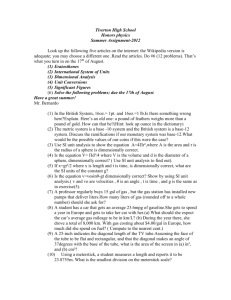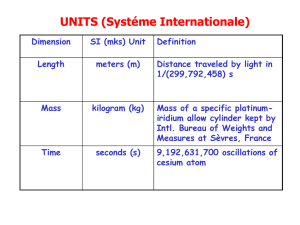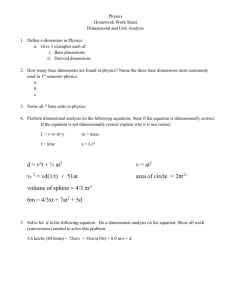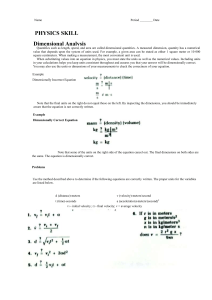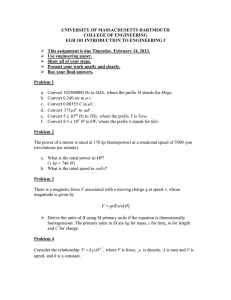Dimensionally Consistent
advertisement
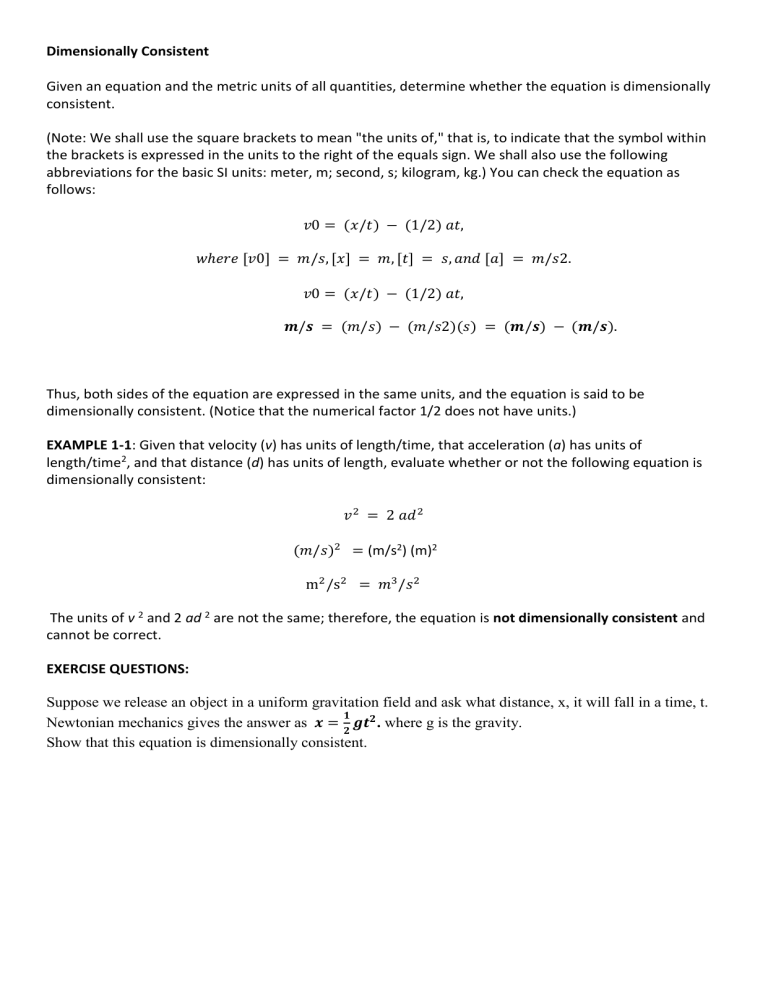
Dimensionally Consistent Given an equation and the metric units of all quantities, determine whether the equation is dimensionally consistent. (Note: We shall use the square brackets to mean "the units of," that is, to indicate that the symbol within the brackets is expressed in the units to the right of the equals sign. We shall also use the following abbreviations for the basic SI units: meter, m; second, s; kilogram, kg.) You can check the equation as follows: 𝑣0 = (𝑥/𝑡) − (1/2) 𝑎𝑡, 𝑤ℎ𝑒𝑟𝑒 [𝑣0] = 𝑚/𝑠, [𝑥] = 𝑚, [𝑡] = 𝑠, 𝑎𝑛𝑑 [𝑎] = 𝑚/𝑠2. 𝑣0 = (𝑥/𝑡) − (1/2) 𝑎𝑡, 𝒎/𝒔 = (𝑚/𝑠) − (𝑚/𝑠2)(𝑠) = (𝒎/𝒔) − (𝒎/𝒔). Thus, both sides of the equation are expressed in the same units, and the equation is said to be dimensionally consistent. (Notice that the numerical factor 1/2 does not have units.) EXAMPLE 1-1: Given that velocity (v) has units of length/time, that acceleration (a) has units of length/time2, and that distance (d) has units of length, evaluate whether or not the following equation is dimensionally consistent: 𝑣 2 = 2 𝑎𝑑 2 (𝑚/𝑠)2 = (m/s2) (m)2 m2 /s2 = 𝑚3 /𝑠 2 The units of v 2 and 2 ad 2 are not the same; therefore, the equation is not dimensionally consistent and cannot be correct. EXERCISE QUESTIONS: Suppose we release an object in a uniform gravitation field and ask what distance, x, it will fall in a time, t. 𝟏 Newtonian mechanics gives the answer as 𝒙 = 𝟐 𝒈𝒕𝟐 . where g is the gravity. Show that this equation is dimensionally consistent. Kinematic of Linear Dynamics Concept of Force Normal and friction force are both contact forces. For every surface there is a co-efficient of friction μ, namely static co-efficient of friction, s and kinetic co-efficient of friction, k . Static Force of Friction
